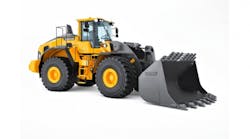One place in every rental center is often taken for granted, may be costing you more than it should and may not be bringing in the extra revenue that is possible. That place is the service department.
Many rental companies assume that because the service department's primary function is to keep your rental fleet going, you don't need to turn a profit outside of that.
If your business does not sell or service equipment, this assumption is correct. If, however, like many rental companies, you distribute a line to get a better price from the manufacturer, you are inevitably drawn into a more complicated scenario in which you must keep your rental fleet going and service your customers' equipment.
This can be done, but it's not easy to maintain your own equipment while keeping up with a customer workload, not letting the overhead costs of the shop get out of hand, finding and holding on to quality technicians, and turning a profit.
This may seem like a tall order, but you can do it with careful planning. You want to keep your customers coming back so that you can service their equipment, and you want to gain new customers who have seen how well maintained your equipment is.
Looking at it from that point of view, the service department is turning a profit even if the ledger shows red ink. But there is no reason you can't turn a profit on those customer repairs.
You may wonder how you can maintain your equipment properly and still have time to take care of the customers' equipment. This is a difficult challenge for many rental centers for many reasons, but the main one is lack of organization.
The key to shop productivity is proper planning and organization. Start with a maintenance schedule to determine when machinery needs to be serviced. Sticking to a schedule is far better than guessing or, worse yet, waiting for a major failure before looking at the piece of equipment.
Maintenance varies with each type of equipment. For example, you would service a trencher much more often than a floor edger. While computerizing service records is valuable, you should also have a hard copy on display in the shop area so your technicians can see at a glance what's on the agenda for that particular day.
Keeping scheduled maintenance records increases machine life, lessens downtime and develops better management of resources. The goal here is to correct problems before they develop into major failures. And that is a profit maker, any way you look at it.
Once you've set up a working maintenance schedule for your equipment, and your shop foreman or lead technician sees to it that it is implemented, then how should you deal with customer-owned equipment? The approach may be a little different, but it still boils down to organization.
Tag time If your service department repairs more than one kind of equipment, divide the incoming tickets into categories - electric tools, hydraulic systems, engine work, etc.
When a customer's piece of equipment comes in, make sure your shop personnel take down all pertinent information when preparing a ticket.
It should go without saying that you should never have unticketed equipment in your service department. Unfortunately, too many rental centers ignore this rule, particularly on busy days. I have often seen customers drop off equipment to a busy technician who, after a brief discussion, goes back to his work, only to forget who dropped off the equipment or fail to communicate the information to other technicians in the shop. I've also seen technicians write tickets and then leave the equipment outside to get rained on, making the information illegible. Nothing is done on the machine because nobody remembers who owns it or what is wrong with it. When the customer calls to find out if his machine is fixed, the embarrassed shop personnel have to start from the beginning, finding out who the customer is and what needs to be repaired.
Aside from the customer's name, company, address and phone, make sure you record the equipment's model and serial number and any other pertinent information on your work order. This way, your technician will have all the information needed for ordering parts right at his fingertips.
Tag the equipment immediately to avoid any chance of confusion. And be sure to write down on the ticket any commitment made to a customer. If you promise a customer something - to finish by a certain date, to call with an estimate, or to check a certain part or function, make sure the promise is recorded on the ticket and that you follow up on it. Noting everything that is agreed to verbally will help avoid confusion, and it gives your technician a "heads-up" when he pulls the ticket.
A word of caution about making commitments - in the dynamic world of rental, it is possible to have a day or more go by when you can't work on any customer equipment because of emergency job-site situations that may arise. Keep this in mind when you tell someone when something will be ready. Let customers know that emergencies can cause delays.
There are other considerations when dealing with customer equipment. Unless you have the capital, space and human resources to consider a stand-alone service department for customers, you may wish to limit your repairs to equipment that you sell, or to equipment to which you have easy parts access. After all, life in the rental world is hard enough without trying to locate parts for somebody's 1967 chain saw.
Parts smart Keeping an eye on your costs is one way to keep parts profit where it belongs - in your company's bank account. How do you ensure you have enough parts without overstocking? I could write an entire article or book on this subject alone, but I'll attempt a short treatment here.
When dealing with equipment suppliers, look at parts availability first. It doesn't do you any good to save $1,000 on a trencher if you lose 10 rentals while waiting on a replacement part.
Likewise, there are good and bad sources for replacement parts. For example, suppose supplier A and supplier B both have the part you need. Supplier A is a distributor for that line and can offer you the full discount. Supplier B, however, just carries it as a dealer and offers a lower discount, or none at all. Request a "line card" from each of the companies with which you do business. Many times this listing of what they carry will tell you if they distribute a particular line. If you have any doubts, ask the companies' sales representatives.
As for stocking enough parts, this is where those maintenance records - and savvy parts management - come in handy. Order parts only when you need them. Having a good parts system will help keep this simple rule in effect. By studying your own equipment maintenance needs, your parts manager can decide on a comfortable level of quick-moving parts to have on hand and then order only when the level is low.
For example: Let's say part No. 1234 is the air filter that fits your cutoff saws. Your rental fleet has 10 cutoff saws that you rent almost daily. Filters are high-maintenance items on cutoff saws, collecting dirt, dust and carcinogens for a living. In order to keep them from succumbing to "lung cancer," you must inspect the filters after each rental, so having 40 filters on hand would be reasonable.
The opposite extreme would be the odd piece of equipment that rarely is rented and has an unusual engine. In this case, you should stock enough parts to service it one time so you don't have to order them and wait. Don't maintain a large quantity of such parts that you wouldn't need. If you do use those parts, replace them immediately so that you always have one available, but don't keep a large surplus.
In the next article, we'll discuss profiting from customer parts sales and how to handle special- order parts without losing your shirt.


